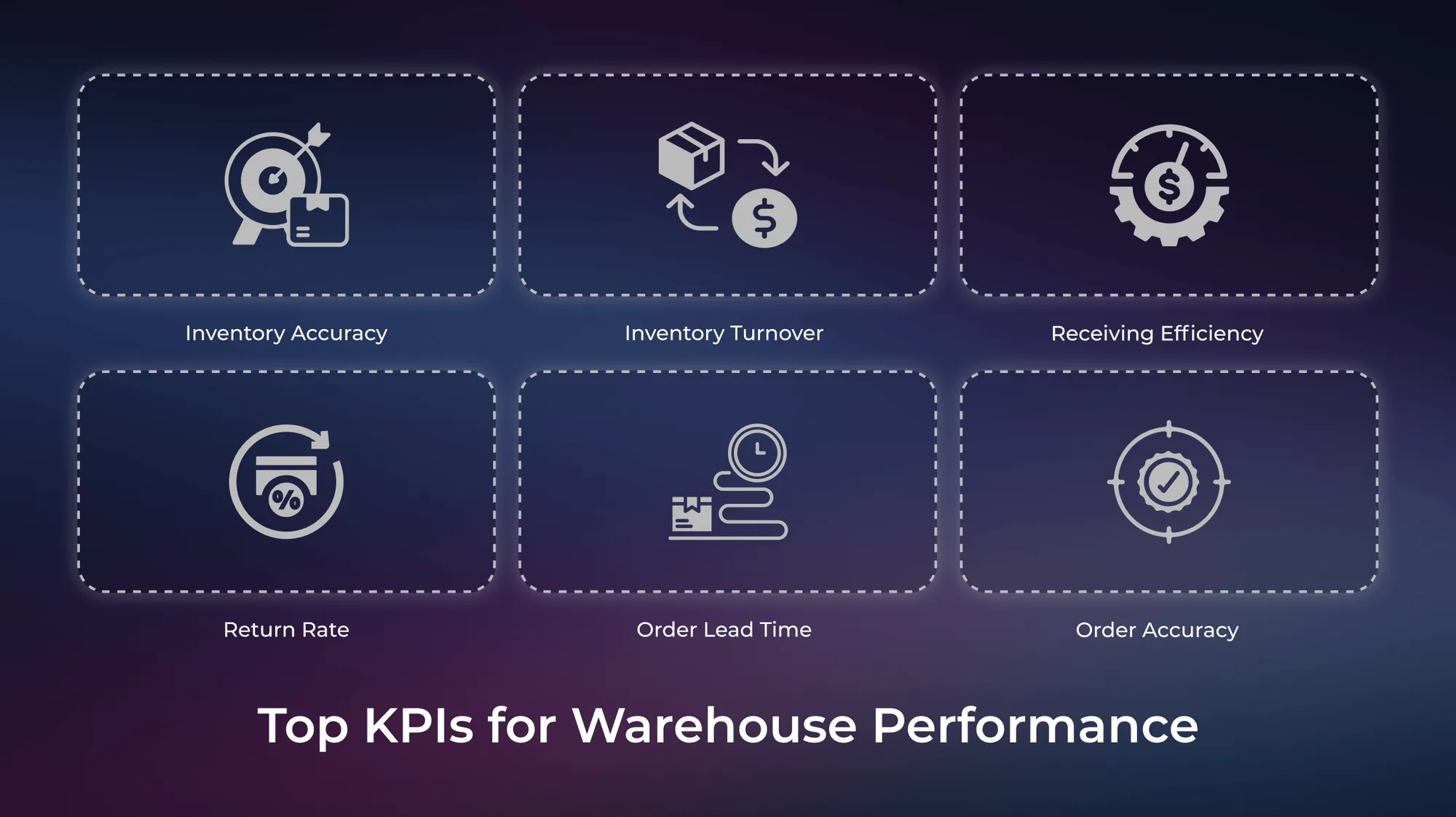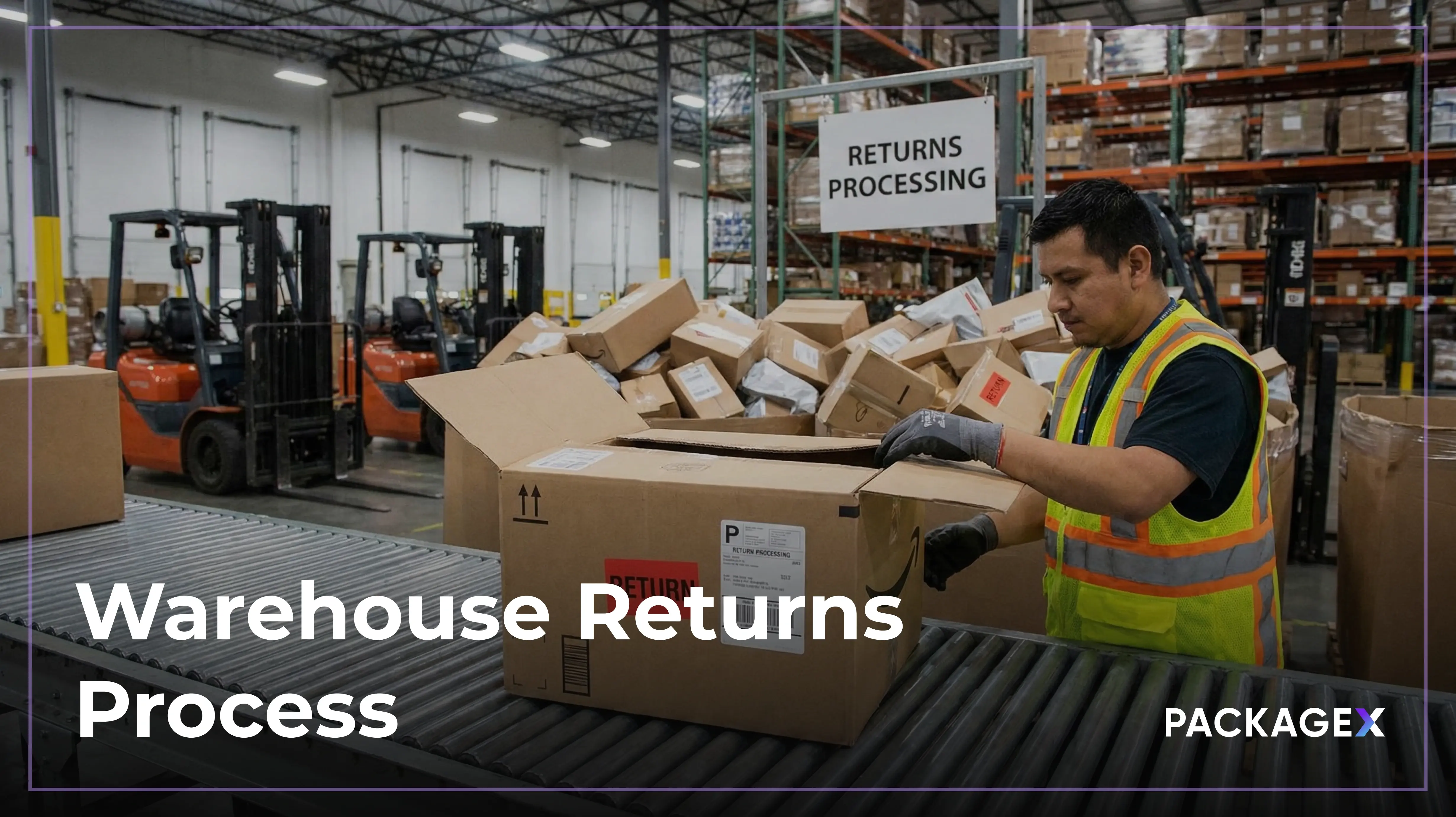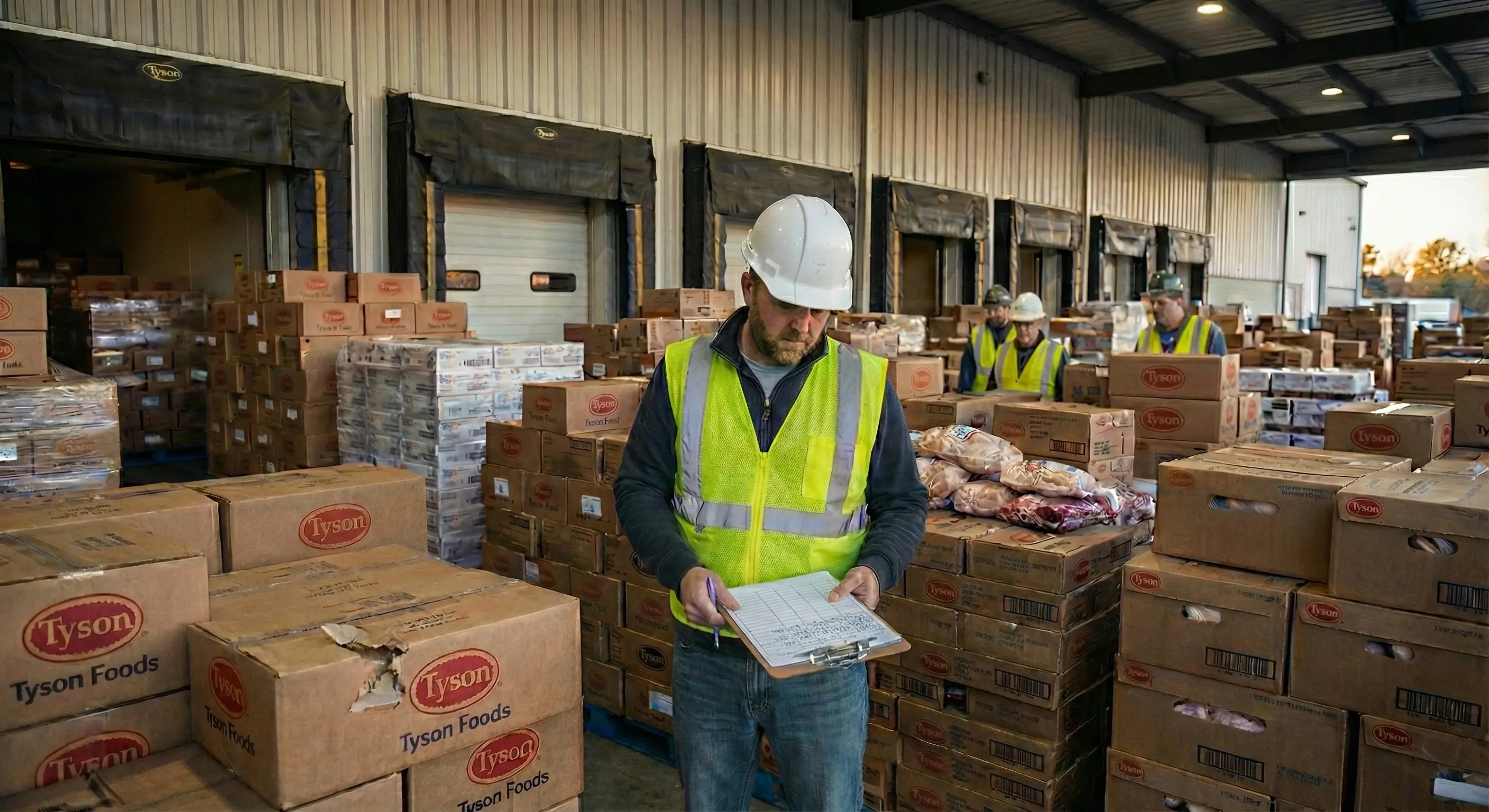Keeping a warehouse running smoothly can feel like juggling too many things at once—there’s inventory to sort, daily shipments to get out the door, and processes to keep from tangling up. Yet, as things get more complicated with rising customer demands and shrinking delivery windows, it’s clear that measuring KPIs for warehouse management requires a thorough system. For managers, figuring out what’s really going on often starts with tracking numbers that actually tell the story of how well (or not) the warehouse is doing. These warehousing KPIs, or key performance indicators, give you a kind of backstage pass to the action, helping you spot bottlenecks, tweak operations, and keep things rolling in the right direction. So, what are the KPIs worth keeping an eye on? Let’s get into it.
Why Is It Important to Track Warehouse Key Performance Indicators?
Tracking warehouse KPIs helps managers spot problems, boost efficiency, and make smarter decisions. Instead of guessing, KPIs provide real-time data on key warehouse metrics like inventory accuracy and order cycle time.
Monitoring KPIs can help managers identify bottlenecks slowing down operations and tackle them head-on. It’s also a great way to cut costs by optimizing inventory, reducing labor waste, and making better use of space.
When it comes to customer satisfaction, KPIs like order accuracy and on-time delivery are crucial for meeting expectations. Comparing warehouse performance to industry standards or previous results using KPIs gives managers a clear picture of progress and where to improve.
Individual employee metrics also help identify areas for training, creating a more efficient and motivated team. Overall, measuring KPIs makes warehouse operations smoother, more cost-effective, and customer-focused.
Top Warehouse KPIs to Measure Efficiency
Let’s take a look at the most common KPIs used to measure and improve warehouse efficiency:
Inventory Accuracy
Inventory accuracy is an extremely important KPI for warehouses. It makes sure that there are correct stock levels, which speeds up order processing, reduces overhead, and allows you to handle more business efficiently.
Inventory Accuracy = (Counted Items / Items on Record) x 100
Counted Items: The actual number of items physically counted in your inventory.
Items on Record: The number of items recorded in your inventory management system.
Achieving 100% inventory accuracy requires a consistent approach. Start by counting your inventory regularly, using a cycle counting program, and ensuring secure storage methods. Partnering with a fulfillment service, upgrading your management system, and running random checks are also effective strategies to improve inventory tracking and minimize discrepancies.
Inventory Turnover
This warehouse KPI helps you track stock levels and sales performance. It’s a financial metric that can assist in maximizing warehouse resources and optimizing production. Inventory turnover can be monitored as a measure of performance.
Inventory Turnover = Cost of Goods Sold / Average Inventory
To improve inventory turnover, focus on accurate inventory forecasting, identify slow-moving stock, and develop strategies to reduce excess. You should also stay updated with industry trends and standards.
Inventory Carrying Costs
This warehouse efficiency metric includes all expenses related to storing products in facilities such as distribution centers, warehouses, or retail spaces. These can include depreciation, taxes, handling fees, and transportation costs. It helps you assess the overall financial impact of your inventory.
To reduce carrying costs, automate processes to lower labor expenses while maintaining productivity, improve inventory forecasting to minimize the time inventory sits idle, and take steps to reduce inventory shrinkage.
Receiving Efficiency
The warehouse receiving metric measures how well your warehouse handles incoming goods. Monitoring this KPI helps identify areas for improvement, such as staff training or equipment upgrades.
Receiving Efficiency = (Volume of Received Inventory) / (Number of Labor Hours)
To improve receiving efficiency in warehouses, you must systematize the process and assign tasks to trained staff. Implementing a clear inventory system with unique SKUs for each product variant can streamline the receiving process. Assigning specific bin locations for each SKU also facilitates faster put-away.
A great way to measure this KPI for warehouse and logistics is by tracking the exact timestamps of when stock is delivered and when it is ready for put-away. Regularly comparing these times to historical data helps identify areas for improvement.
PackageX enhances receiving efficiency by using barcode scanning technology to update inventory instantly. As soon as new stock is delivered, PackageX allows you to scan products, record quantities, and update inventory in real time. This helps speed up receiving, reduce errors, and keep your warehouse operations running smoothly.
Return Rate
The return rate tracks the percentage of items returned by customers compared to total sales. A high return rate may point to problems with the products or order fulfillment processes. Measuring this is important if you want to know how satisfied your customers are or how good the product quality is.
Return Rate = (Number of Returns / Total Number of Units Sold) x 100%
To reduce return rates, focus on improving product descriptions and training your staff to ensure accurate order fulfillment. Implementing quality control systems, such as automated inspections, can also help prevent defective products from being shipped. An excellent way to do this is to use OCR scanning to verify items before shipment, which can reduce mistakes and improve overall accuracy.
Order Lead Time
Order lead time measures the time it takes from order placement to delivery. Shorter lead times improve the customer experience by getting products to customers faster.
Order lead time is influenced by factors like production capacity, inventory availability, supply chain efficiency, logistics, and the speed of order processing. Efficient handling of these areas ensures faster delivery times.
Backorder Rate
This KPI tracks the percentage of orders that can't be fulfilled due to insufficient inventory. A high backorder rate can lead to dissatisfied customers and lost sales opportunities.
Backorder Rate = (Total Number of Items Ordered/Number of Backordered Items)×100
Use data-driven forecasting to predict demand more accurately, set clear reorder points, and adopt effective inventory tracking methods. This ensures that stock levels align with customer needs, reducing the risk of unfulfilled orders.
Order Accuracy
Order accuracy measures the percentage of orders that are correctly fulfilled without errors. This metric is crucial because high accuracy reduces returns and customer complaints, enhancing overall satisfaction. By closely monitoring order accuracy, managers ensure the fulfillment process remains efficient and customer-centric, ultimately increasing both operational efficiency and brand reputation.
Order Cycle Time
Order cycle time is all about tracking the average time it takes from when an order is placed to when it’s fulfilled. This metric is super helpful for warehouse managers to see how efficient their order processing really is. The faster the order cycle, the smoother the process, which means happier customers and fewer delays. By keeping an eye on this KPI, managers can spot areas that might need tweaking, like speeding up picking and packing or improving the way orders are routed to reduce wait times.
Warehouse Capacity Utilization
Warehouse capacity utilization KPI measures how effectively a warehouse is using its available storage space. A higher utilization rate often leads to cost savings, as it indicates the space is being optimized. On the other hand, underutilization may suggest excess space, which can lead to higher operational costs.
Warehouse Capacity Utilization = (Total Volume of Inventory Stored / Total Volume of Storage Space Available) x 100%
To optimize storage and maximize space, consider using 3D modeling tools for layout planning, apply dynamic slotting strategies to accommodate shifting inventory, and make the most of vertical space with solutions like mezzanine floors or automated storage systems.
Pick Accuracy
Pick accuracy tells you how accurately items are selected from inventory to fulfill customer orders. It ensures the right items are picked in the correct quantities, directly affecting the quality of order fulfillment. High pick accuracy leads to fewer errors, reduced returns, and improved customer satisfaction, while any discrepancies can result in delays and dissatisfaction.
Pick Accuracy = (Number of Orders Picked Accurately / Total Number of Orders Picked) x 100%
Track Your Warehouse KPIs with PackageX
KPIs for warehouse managers, such as order accuracy, on-time delivery, and inventory accuracy, are essential for driving operational efficiency, improving customer satisfaction, and identifying areas for improvement. Regularly tracking these metrics enables data-driven decisions that help reach warehouse performance goals. So, how can you track this amount of data?
PackageX offers powerful tools to streamline warehouse operations and boost efficiency. By providing real-time tracking and visibility through a warehouse KPI dashboard, warehouse managers can effectively monitor inventory levels and track orders throughout the fulfillment process. Our robust analytics generate insightful reports on warehouse key performance indicators, allowing managers to identify trends and optimize workflows. With automation capabilities, PackageX helps reduce manual errors, lower labor costs, and improve overall productivity.
FAQs
Which 5 KPIs can be used to monitor the performance of this warehouse to improve efficiency?
By focusing on key warehouse KPIs such as inventory accuracy, receiving efficiency, picking and packing costs, inventory turnover, and customer order cycle time, warehouse managers can ensure a cost-effective and efficient operation. These metrics help maintain smooth inventory flow, reduce operational costs, and boost customer satisfaction.
How do you evaluate a warehouse?
Warehouse efficiency can be assessed by conducting regular audits and monitoring key performance indicators (KPIs) like picking accuracy, receiving timelines, picking cycle time, and put-away cycle time. The valuable insights gained from tracking these can help identify areas for improvement and ensure a more streamlined and cost-effective warehouse operation.




